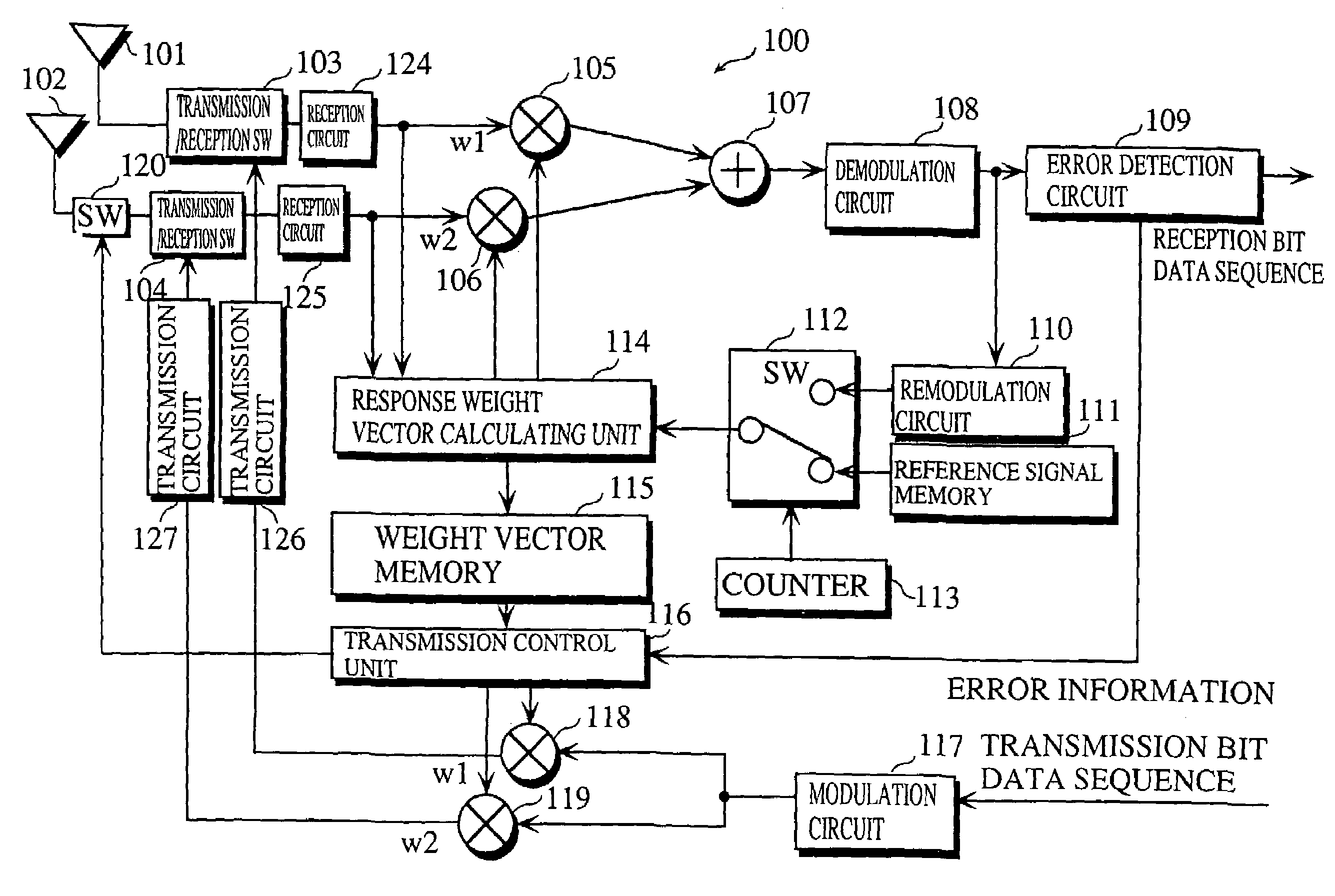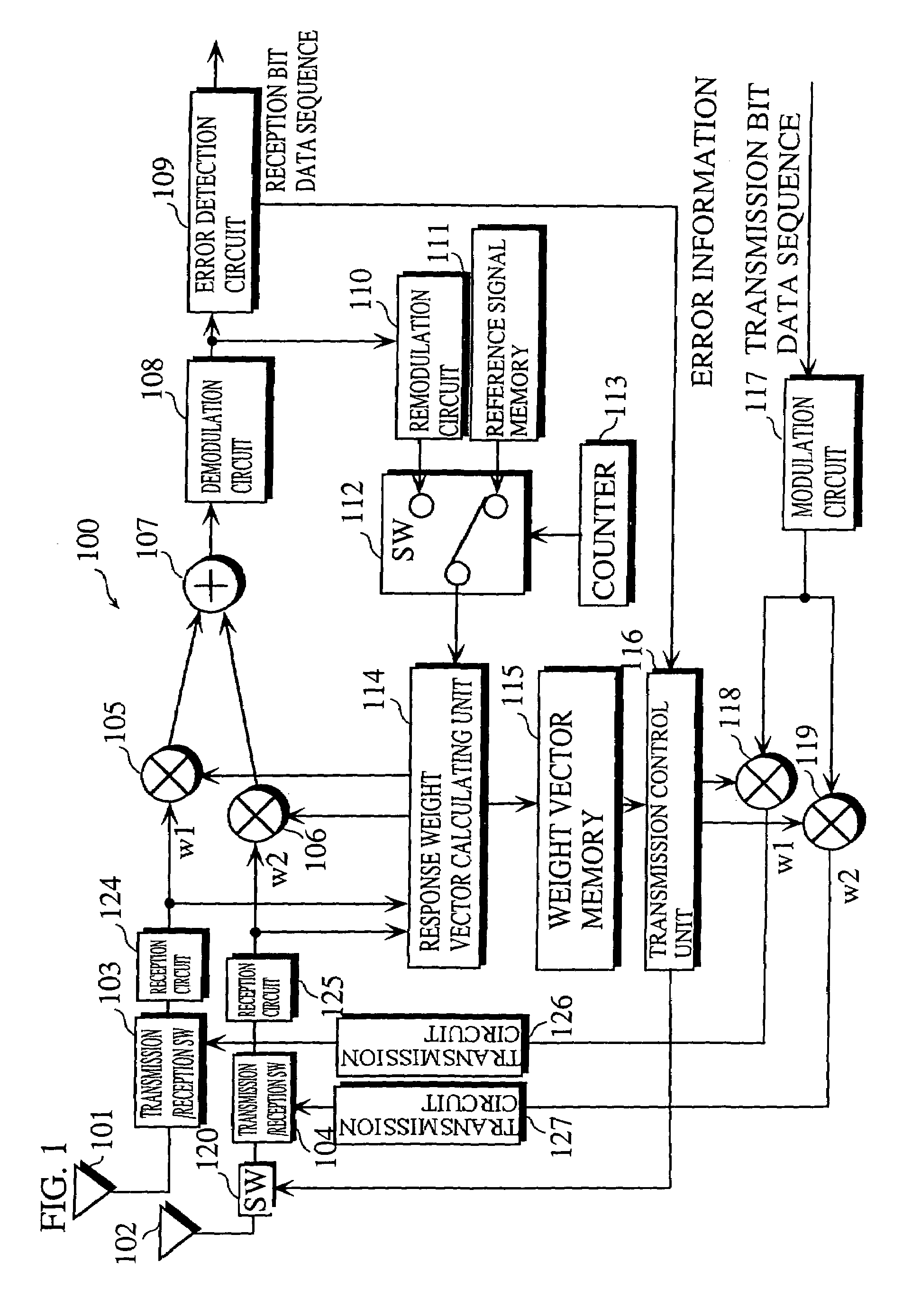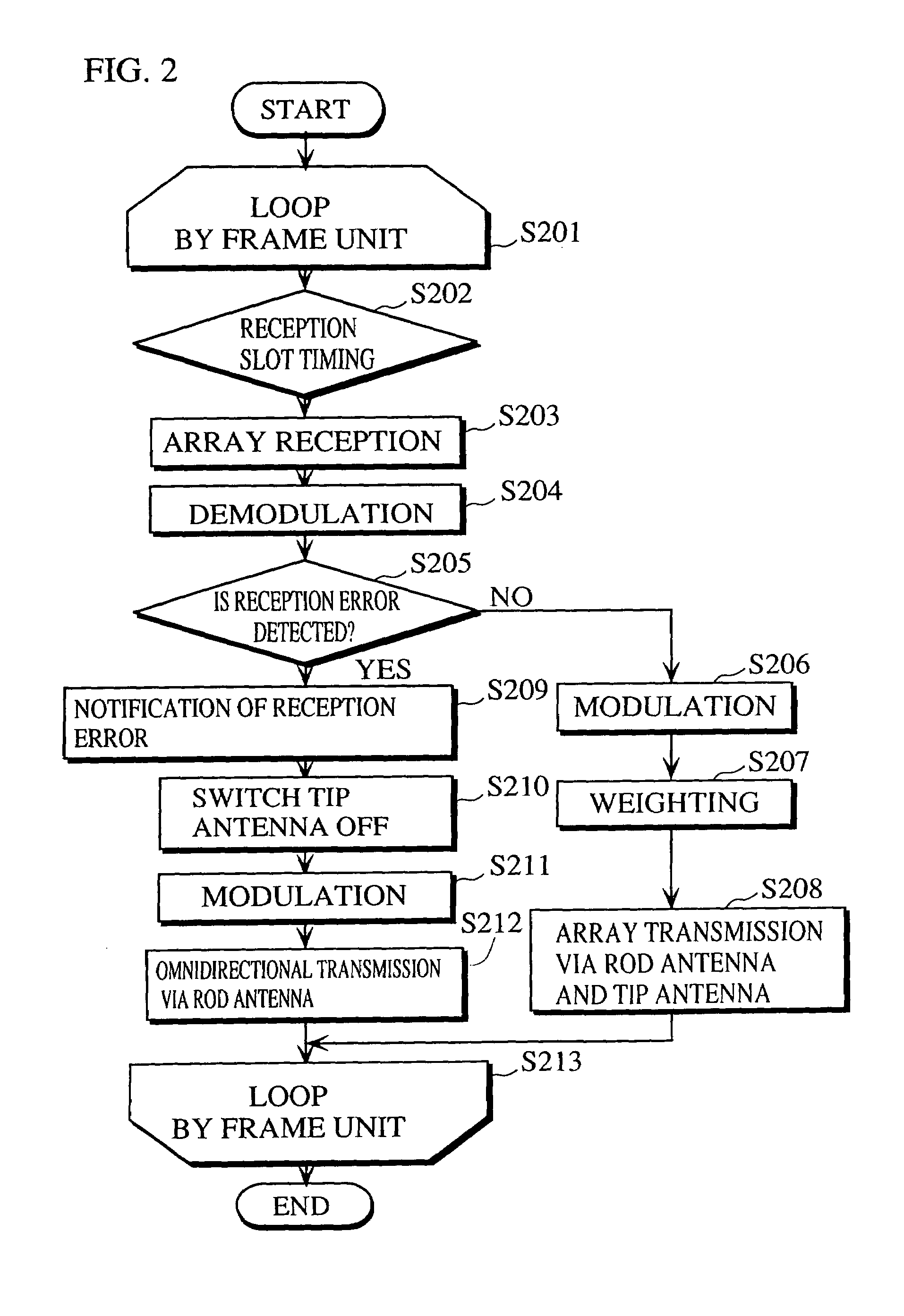Mobile communication terminal, communication method and program
a mobile communication terminal and communication method technology, applied in the field of communication technology for mobile communication terminals, can solve the problems of inability of the base station to generate a directivity pattern, transmission signals in the same frame cannot reach the base station, and the mobile communication terminal cannot receive signals properly from the base station, so as to achieve the effect of higher probability of transmission signals and higher reception quality
- Summary
- Abstract
- Description
- Claims
- Application Information
AI Technical Summary
Benefits of technology
Problems solved by technology
Method used
Image
Examples
first embodiment
[0030]FIG. 1 is a block diagram showing a main construction of a mobile communication terminal in the first embodiment of the invention.
[0031]As shown in FIG. 1, a mobile communication terminal 100 includes antennas 101 and 102, reception circuits 124 and 125, transmission / reception switches 103 and 104, multipliers 105 and 106, an adder 107, a demodulation circuit 108, an error detection circuit 109, a remodulation circuit 110, a reference signal memory 111, a switch 112, a counter 113, a response weight vector calculating unit 114, a weight vector memory 115, a transmission control unit 116, a modulation circuit 117, multipliers 118 and 119 and a switch 120.
[0032]The antenna 101 is a rod antenna and the antenna 102 is a tip antenna which is provided on a substrate inside the mobile communication terminal 100.
[0033]The transmission / reception switches 103 and 104 switch between reception and transmission.
[0034]The reception circuits 124 and 125 convert high frequency signals receive...
second embodiment
[0065]The following describes a mobile communication terminal in the second embodiment of the invention.
[0066]FIG. 5 is a block diagram showing the construction of the mobile communication terminal in the present embodiment.
[0067]As shown in FIG. 5, a mobile communication terminal 200 differs from the mobile communication terminal 100 of FIG. 1 in that it includes a reception level measuring unit 123, switches 121 and 122 in place of the switch 120, and a transmission control unit 129 in place of the transmission control unit 116. Construction elements which are the same as those shown in FIG. 1 are given the same reference numerals, and their explanation is omitted here. The following description focuses on the differences with the first embodiment.
[0068]The reception level measuring unit 123 measures reception levels R1 and R2 of signals received from the reception circuits 124 and 125, and outputs them to the weight vector memory 128. The reception levels R1 and R2 indicate recep...
PUM
 Login to View More
Login to View More Abstract
Description
Claims
Application Information
 Login to View More
Login to View More - R&D
- Intellectual Property
- Life Sciences
- Materials
- Tech Scout
- Unparalleled Data Quality
- Higher Quality Content
- 60% Fewer Hallucinations
Browse by: Latest US Patents, China's latest patents, Technical Efficacy Thesaurus, Application Domain, Technology Topic, Popular Technical Reports.
© 2025 PatSnap. All rights reserved.Legal|Privacy policy|Modern Slavery Act Transparency Statement|Sitemap|About US| Contact US: help@patsnap.com



